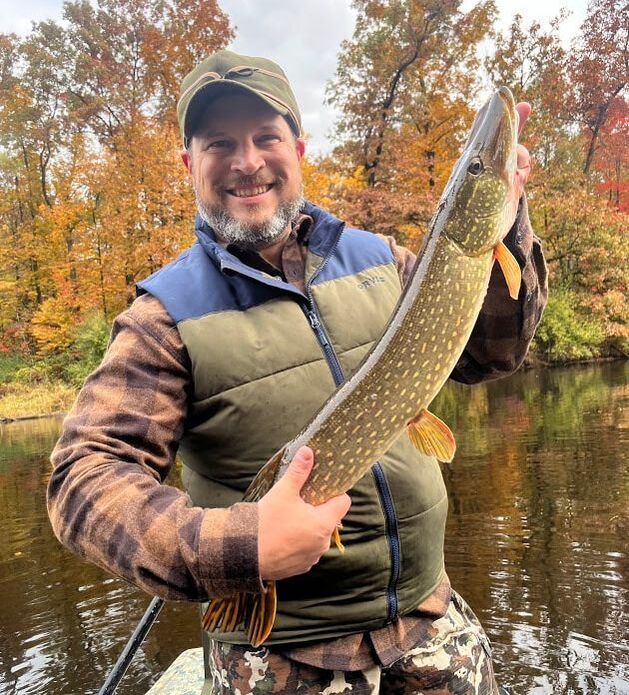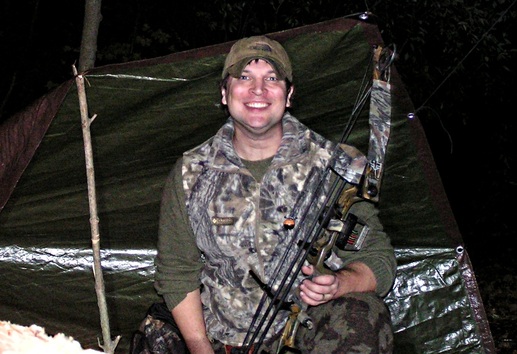|
My forefoot strikes dirt, my toes push off and the other foot follows suit. Prairie grasses brush my shins as I run the Bloody Knife Trail up a hill above General Custer’s old house at Fort Abraham Lincoln State Park near Bismarck, N.D. A whitetail explodes out of a woody draw and bounds up a hill. The Missouri River flows below where Louis and Clark camped on their voyage west in 1804. The reconstructed On-a-Slant Mandan village lies at the confluence of the Heart and Missouri Rivers. Like many trails I’ve run, the Land and Water Conservation Fund has contributed to this public land opportunity for all.
Trails to run are the first feature I look for when visiting a new city. I traveled to Bismarck-Mandan, N.D., earlier this month for the Association of Great Lakes Outdoor Writers annual conference. We enjoyed a tour of the Custer house at Fort Abraham Lincoln State Park on the first night of the conference, but I focused on the hills behind it. The Land and Water Conservation Fund (LWCF) has invested almost $310,000 in the park’s trails and facilities, so a couple days later I drove back out to the park and ran five miles on its trail system. Trail Running Participation is Growing The Outdoor Foundation released its 2018 participation report in July. It showed that 55.9 million Americans participate in running, jogging and trail running, making it the most popular outdoor activity in the country. Trail runners have more than doubled as a subset of that category in the past decade, from 4.2 million in 2007 to 9.1 million in 2017. Five of the top six motivations to get outside involve some version of “exercise” or “nature”, according to the report, and trail running accomplishes both. Trail running reduces impacts to knees from striking hard surfaces, strengthens stabilizing muscles from uneven terrain, and includes the psychological benefits of spending time in nature. It has helped me lose 50 pounds in the three years since I started. Trail running is also uniquely dependent on public lands. While trail runners only need a single track dirt path to run on, those trails often need public lands and facilities like parking lots, restrooms and trailheads to support them. The Land and Water Conservation Fund Invests in Trails Many of the trails we run — like those in the Fort Abraham Lincoln State Park — have received Land and Water Conservation Fund (LWCF) investments for support facilities, trail development and the acquisition of the public land itself. The Land and Water Conservation Fund was established in 1964 to invest royalties from offshore oil and gas development into public outdoor recreation land and development, making grants to local, state and federal entities at no cost to taxpayers. In fact, all of the trail races I’ve run in the past two years have occurred on LWCF-acquired or developed land. I ran the 10K at Trail Fest last summer at Brighton State Recreation Area in Michigan, where the LWCF has invested almost $740,000. A couple weeks later I ran the Boulder Sunset 5K in Boulder, Colorado. The Boulder Reservoir has received more than $72,000 in LWCF grants. This summer, I ran the half marathon at Trail Weekend and the 50K at Run Woodstock. Both races use the Potawatomi Trail and facilities in the Pinckney State Recreation Area, which has received almost $830,000 through the LWCF. And this is just a sliver of the growing number of trail races held across the country. Chances are good that the LWCF has invested in your favorite trails, too: there isn’t a single county in America which hasn’t received an LWCF grant. The Land and Water Conservation Fund Will Expire Without Action by Congress The LWCF is set to expire at the end of September, 2018, though, if Congress does not reauthorize it. While I was in North Dakota, news broke that the House Committee on Natural Resources passed a permanent reauthorization of the LWCF after a compromise was reached. At the same time, the National Wildlife Federation public lands team and state affiliates were in Washington, D.C. lobbying their congressional representatives for reauthorization of the LWCF. This is a big step forward, but the compromise must still be passed by the full House of Representatives, the U.S. Senate, and signed into law. And while the compromise includes permanent reauthorization, it does not include dedicated funding, so there is still much work to do with little time to do it. Whether you run trail races or just like to kick up dirt for fun and exercise on your own — like when you’re in North Dakota for a work-related conference — it’s likely that your favorite trails have received LWCF investments to help make them what they are. The LWCF supports the trails we run, so let’s support the LWCF so it can keep making those investments for us. Please join the National Wildlife Federation in calling upon your senators to reauthorize the Land and Water Conservation Fund.
This post originally appeared on the Michigan League of Conservation Voters blog on Nov. 16, 2011.
|
AUTHOR
Drew YoungeDyke is an award-winning freelance outdoor writer and a Director of Conservation Partnerships for the National Wildlife Federation, a board member of the Outdoor Writers Association of America, and a member of the Association of Great Lakes Outdoor Writers and the Michigan Outdoor Writers Association.
All posts at Michigan Outside are independent and do not necessarily reflect the views of NWF, Surfrider, OWAA, AGLOW, MOWA, the or any other entity. ARCHIVES
June 2022
SUBJECTS
All
|






 RSS Feed
RSS Feed